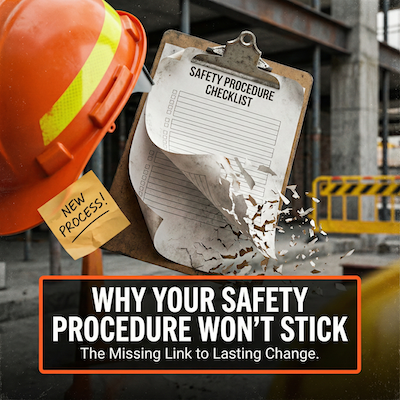Introduction to Construction Safety and Worker Behavior
Construction sites are complex environments where multiple factors contribute to the overall safety of the workplace. While traditional safety measures focus on addressing physical hazards, there is growing recognition that the psychological factors influencing workers' behavior are equally important. In this article, we explore the psychology behind construction safety, delving into the key factors that affect workers' behavior and discussing strategies to improve safety by addressing these psychological aspects.
The Importance of Psychological Factors in Construction Safety
Construction sites are often characterized by tight deadlines, high-pressure environments, and dynamic work conditions. These factors can lead to workers experiencing stress, fatigue, and a range of other psychological challenges that can compromise their decision-making abilities, ultimately affecting the overall safety of the site. Understanding the underlying psychological factors that drive workers' behavior is essential in creating a safer work environment and reducing the risk of accidents and injuries.
The Role of Cognitive Bias in Construction Safety
One psychological aspect that can impact construction safety is cognitive bias. Cognitive biases are systematic errors in thinking that can lead to irrational or suboptimal decision-making. For example, workers might underestimate the risk associated with a particular task due to overconfidence or the illusion of control. Recognizing and addressing cognitive biases is crucial in promoting better decision-making and, consequently, enhancing construction safety.
Understanding the Behavior of Workers: Key Psychological Factors
Several psychological factors can influence the behavior of construction workers. These include:
Attitude and Perception
Workers' attitudes and perceptions towards safety can significantly impact their behavior on the job. Those who view safety as a priority are more likely to engage in safe work practices and follow safety guidelines.
Motivation
Motivation plays a crucial role in workers' adherence to safety regulations. Intrinsic motivation, driven by personal values and beliefs, can be more effective than extrinsic motivation, such as financial rewards or punishments.
Stress and Fatigue
High levels of stress and fatigue can impair workers' decision-making abilities and contribute to accidents. Addressing these factors is essential in promoting a safer work environment.
Group Dynamics and Social Influence
Workers' behavior can be influenced by the social dynamics within their workgroup. Peer pressure, group norms, and leadership styles can all impact how workers approach safety.
Training and Learning
Effective training and continuous learning are key to ensuring workers have the necessary knowledge and skills to perform their tasks safely and efficiently.
Strategies to Improve Construction Safety by Addressing Psychological Factors
To improve construction safety by addressing psychological factors, consider the following strategies:
Effective Communication and Training
Ensure that workers receive clear, consistent messages about the importance of safety and are provided with appropriate training to develop their skills and knowledge. Regularly update and reinforce training to keep safety at the forefront of workers' minds.
Encouraging a Safety Culture
Promote a culture of safety within the organization by emphasizing its importance at all levels, from top management to the front-line workers. Encourage open communication about safety concerns and recognize workers who demonstrate a strong commitment to safety.
Incentives and Motivation
Offer incentives that encourage safe work practices and motivate workers to prioritize safety. While financial rewards can be effective, consider non-monetary incentives, such as recognition or opportunities for career growth, to tap into workers' intrinsic motivation.
Addressing Stress and Fatigue
Implement measures to reduce stress and fatigue, such as providing adequate breaks, ensuring reasonable workloads, and offering support for workers experiencing personal issues. Encourage workers to speak up about their stress levels and fatigue, and be responsive to their needs.
Leveraging Group Dynamics and Social Influence
Leverage the power of group dynamics by fostering a positive and supportive work environment. Encourage team leaders to set a good example for safety and create a sense of shared responsibility for maintaining a safe workplace.
Conclusion
In conclusion, understanding the psychology behind construction safety and the behavior of workers is essential in creating a safer work environment. By addressing key psychological factors such as attitude, motivation, stress, group dynamics, and training, organizations can implement strategies that effectively promote safety and reduce the risk of accidents and injuries. By fostering a safety culture that prioritizes both physical and psychological well-being, the construction industry can make significant strides towards creating safer workplaces for all.
Scratchie is a leader in applying psychology to improve safety outcomes. For a demo of our app, book a spot on https://www.scratchie.com/book-a-demo
Frequently Asked Questions
1. What is the role of cognitive bias in construction safety?
Cognitive biases are systematic errors in thinking that can lead to irrational or suboptimal decision-making. In construction safety, cognitive biases may cause workers to underestimate risks or make poor safety-related decisions.
2. How can motivation impact construction safety?
Motivation plays a crucial role in workers' adherence to safety regulations. Intrinsic motivation, driven by personal values and beliefs, can be more effective than extrinsic motivation, such as financial rewards or punishments. However, intrinsic motivation can be difficult to foster. As such, extrinsic motivation is often a way in.
3. Why is addressing stress and fatigue important for construction safety?
High levels of stress and fatigue can impair workers' decision-making abilities and contribute to accidents. Addressing these factors is essential in promoting a safer work environment.
4. What strategies can be used to improve construction safety by addressing psychological factors?
Strategies to improve construction safety by addressing psychological factors include effective communication and training, encouraging a safety culture, offering incentives and motivation, addressing stress and fatigue, and leveraging group dynamics and social influence.
5. How can group dynamics and social influence affect construction safety?
Workers' behavior can be influenced by the social dynamics within their workgroup. Peer pressure, group norms, and leadership styles can all impact how workers approach safety, making it essential to foster a positive and supportive work environment.










.svg)
